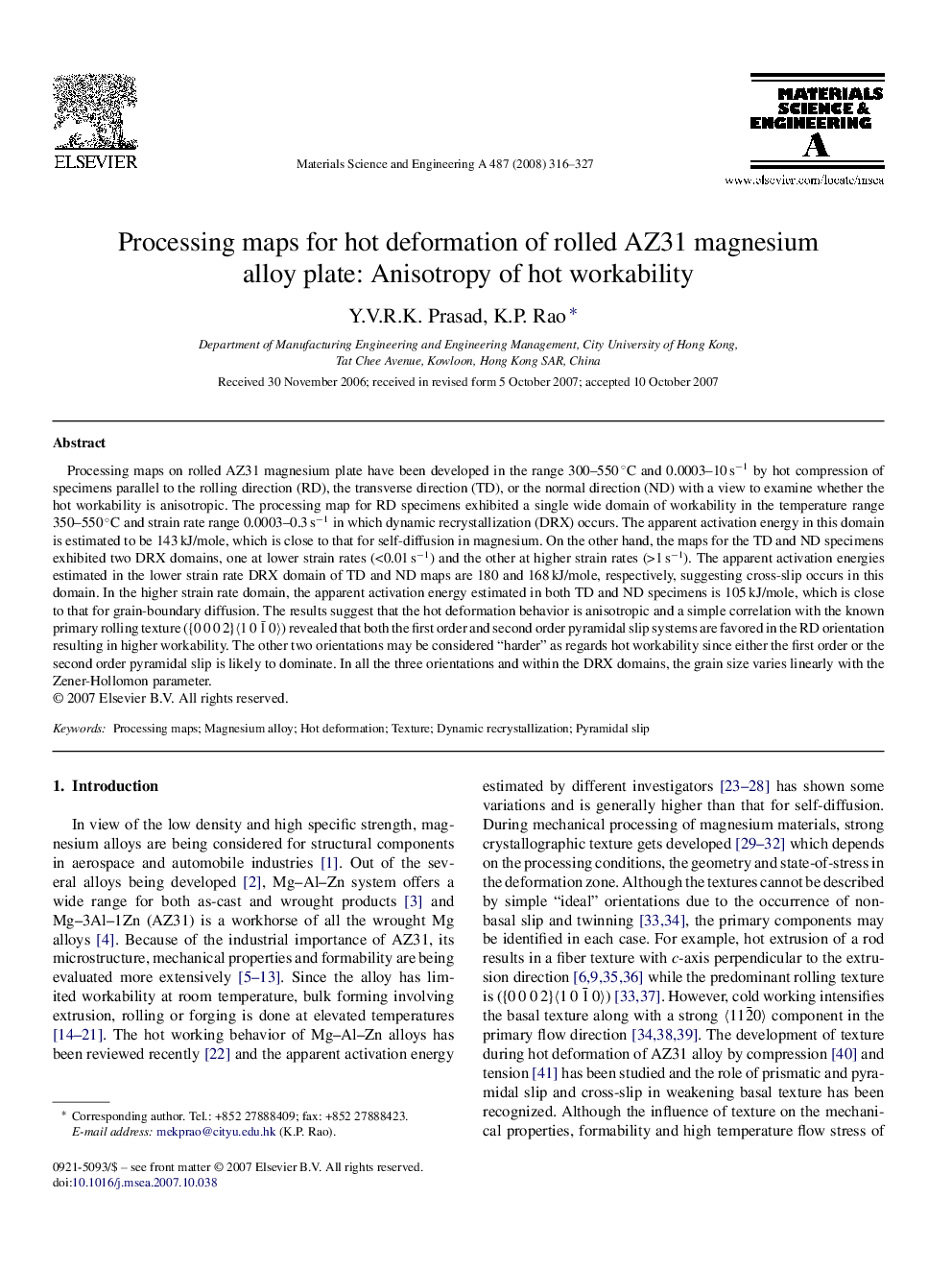| Article ID | Journal | Published Year | Pages | File Type |
|---|---|---|---|---|
| 1582575 | Materials Science and Engineering: A | 2008 | 12 Pages |
Abstract
Processing maps on rolled AZ31 magnesium plate have been developed in the range 300-550 °C and 0.0003-10 sâ1 by hot compression of specimens parallel to the rolling direction (RD), the transverse direction (TD), or the normal direction (ND) with a view to examine whether the hot workability is anisotropic. The processing map for RD specimens exhibited a single wide domain of workability in the temperature range 350-550 °C and strain rate range 0.0003-0.3 sâ1 in which dynamic recrystallization (DRX) occurs. The apparent activation energy in this domain is estimated to be 143 kJ/mole, which is close to that for self-diffusion in magnesium. On the other hand, the maps for the TD and ND specimens exhibited two DRX domains, one at lower strain rates (<0.01 sâ1) and the other at higher strain rates (>1 sâ1). The apparent activation energies estimated in the lower strain rate DRX domain of TD and ND maps are 180 and 168 kJ/mole, respectively, suggesting cross-slip occurs in this domain. In the higher strain rate domain, the apparent activation energy estimated in both TD and ND specimens is 105 kJ/mole, which is close to that for grain-boundary diffusion. The results suggest that the hot deformation behavior is anisotropic and a simple correlation with the known primary rolling texture ({0002}ã101¯0ã) revealed that both the first order and second order pyramidal slip systems are favored in the RD orientation resulting in higher workability. The other two orientations may be considered “harder” as regards hot workability since either the first order or the second order pyramidal slip is likely to dominate. In all the three orientations and within the DRX domains, the grain size varies linearly with the Zener-Hollomon parameter.
Keywords
Related Topics
Physical Sciences and Engineering
Materials Science
Materials Science (General)
Authors
Y.V.R.K. Prasad, K.P. Rao,
